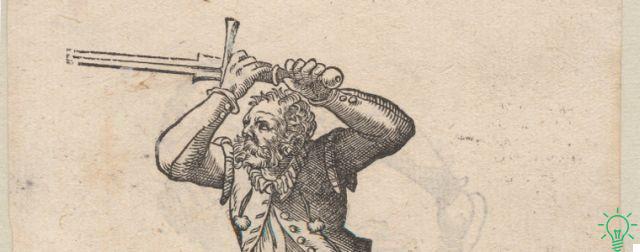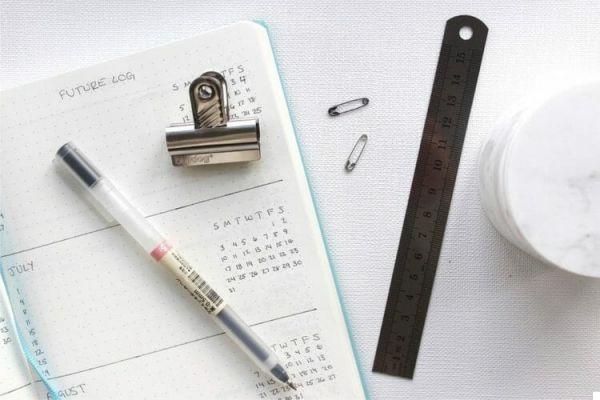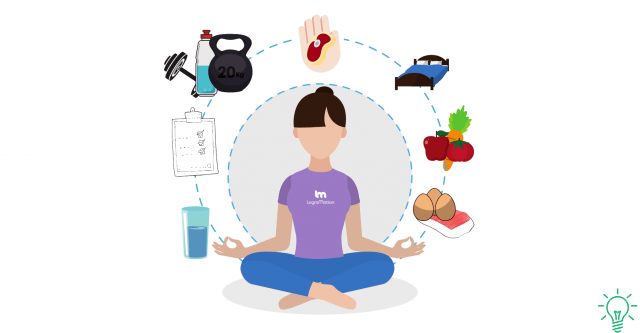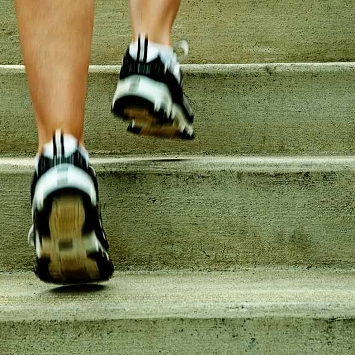Active breaks are moments of physical activation that allow us to vary the dynamics of work and help us prevent health problems such as stress, eyestrain and back pain.

Last update: October 14, 2019
Many of us are used to sitting for a good part of the day. Well, as comfortable as it may be, the body needs movement and activity to maintain optimal physical and psychological health. That is why it is so important to take active breaks at work.
Active breaks consist in carrying out some simple exercises that involve different muscle groups, through joint mobilization and stretching, to be carried out in the workplace. The duration is generally about and it is recommended to run them every two hours of work.
The practice of active breaks at work allows you to disconnect from routine activities for reactivate the body and release the accumulated stress, as well as improving productivity, among other other benefits.
Why should we take active breaks at work?
Taking active breaks after several hours of sitting in the same position offers several benefits for both body and mind. Some of the most important are:
- Improvement of muscle tone and posture.
- Stress reduction and self-esteem increase.
- Increased concentration levels.
Let's examine them in more detail.
1- Improvement of muscle tone and posture
Spending several hours sitting in the same position can cause muscle wasting, this is because the muscles need to be exercised. It is also common not adopting an optimal posture in the chair, which can have a negative impact on the body.
Thankfully, taking active breaks at work can help calm those problems. For example, doing a short yoga session or doing some stretching will improve both posture and muscle condition. In addition, it will promote the disappearance of back pain.
2- Reduction of stress and increase of self-esteem
Lack of exercise is directly related to anxiety and stress. While taking active breaks at work is not enough to replace an adequate training program, it can still help us manage high levels of stress and the build-up of worries related to work overload.
To execute these exercises also promotes the secretion of endorphins in the brain, neurotransmitters linked to the feeling of well-being and good mood. This, in turn, has repercussions on self-esteem as it motivates us, also allowing us to leave behind the monotony linked to the routine of work.
3- Increase in concentration levels
Our attention is not designed to stay focused on the same task for long. This is especially true if we consider having to stand in front of a screen for long periods of time. Taking active breaks at work is therefore highly recommended in these cases, as promotes oxygenation and rest of attention for a few minutes.
This happens because, when we get up from the chair and perform physical activity, a part of our mental energy is recharged. Although we take more breaks, and therefore we will work less, we will be more productive. The results will still be positive and by the end of the day we will have carried out more activities.
How to take active breaks at work
As we have just seen, active breaks are moments of physical activation that allow us to vary the work dynamics and they also help us prevent health problems such as stress, eyestrain and back pain.
Here are some exercises to do during active breaks.
1- Yoga
Yoga is an extremely comprehensive exercise, which it acts not only on the muscles, but also on concentration and breathing. This discipline plays a very important role in physical and mental health.
While there are tons of resources to get started with yoga, we recommend that you start with a stress-relieving program.
2- Walk
Walking is the simplest physical exercise there is, but also one of the most useful. If you want to make the most of your breaks at work, you just have to put on some headphones and take a walk in the neighborhood around the office.
This way, you can clear your mind and activate your muscles, promoting the secretion of various beneficial substances in the body.
3- Exercises for the neck and shoulders
The neck and shoulders are the areas that accumulate the most physical and mental tension. It is therefore extremely important to perform some unloading exercises that focus on these areas of the body.
For the neck we can perform a massage on the back side with both hands and in the upper back for 15 seconds, or bend the head, trying to touch the chest with the chin and then bring it slightly towards the right side for 10 seconds and then towards the left side.
If we want to focus on the shoulders to avoid fatigue overload and possible contractures, we can place both hands on it and form large circles back and forth. Another exercise involves placing the arms extended along the body and simultaneously lifting the shoulders as if trying to touch the ears. Do this for 5 seconds and then rest.
4- Going up and down stairs, the easiest way to take active breaks at work
What if we don't have time to learn yoga? What if we can't leave the office to go for a walk in the park? In this case, we have an ace up our sleeve: go down and up the stairs.
This exercise, while looking extremely simple, is one of the best for burning fat and reactivating circulation. You will activate the muscles in a short time and you will notice that the mind is more relaxed, while recovering some of your energy.
Taking active breaks at work is essential for maintaining good physical and mental health. Now it's your turn: what activity do you intend to practice?


























